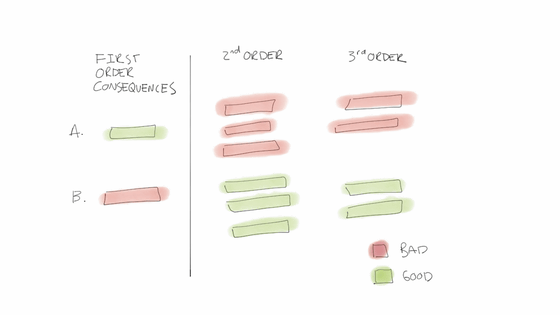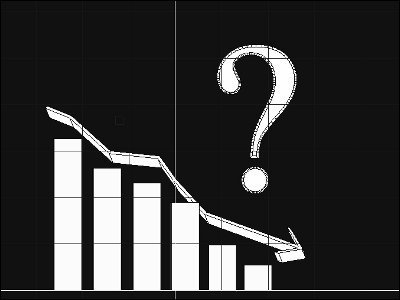What is 'secondary thinking' to create an unusual strategy?

When developing a strategy to achieve a goal, or when dealing with a problem that you face, it is important to first understand the challenges that stand before you. However, it is not only important to solve one problem smartly, but it is also necessary to scrutinize the long-term effects after solving it. The importance of doing such 'secondary thinking' is introduced by the blog
Second-Order Thinking: What Smart People Use to Outform
https://fs.blog/2016/04/second-order-thinking/
When you come up with one task, and you come up with a solution that seems to be the best, you should not take that measure as if you have found the correct answer. For example, even though it seems to be superior to other options as a means for the problem, 'What is the impact of the solution?', 'A problem that may occur next when the means is taken Is lacking in the perspective of

The problem is not only temporarily, but the next (secondary) problem, the next (third) problem, and so on n dimensions are called 'secondary thinking' in the blog It is. Getting to this secondary thought is said to be a powerful tool to highlight thinking.

The word secondary thinking is an idea that American investor Howard Marks described in his book The 20 Most Important Lessons in Investment . In the field of investment, first-phase thinking is simple and superficial, and even if it is a plausible option, it is less valuable as a strategy because everyone can choose it.
On the other hand, second-stage thinking, or secondary thinking, is more complicated and cautious. By thinking about the impact of taking the strategy assumed in the first step thinking and feeding it back to the decision, it is possible to find something that is not visible to anyone but something that others can not see It will be.

The blog offers four ideas on how to train your thinking ability to enable such complex thinking. After doing your primary thinking, the first idea is to ask yourself what you would do after you have done your primary thinking. The second idea is to think in terms of '10 minutes after taking that strategy, 10 years after, 10 years after?' The third idea is to review and review the results of primary, secondary and tertiary thinking. This makes it possible to adjust your thinking. And the fourth idea is to assume the reaction of employees and competitors to the adopted strategy when utilizing secondary thinking in the business scene.

The important thing here is that secondary thinking does not always influence the first decision. Even if the option that seems to be the best is indeed the best, understanding between the problem and the strategy will differ greatly if you choose it with only primary thinking and you reach it with secondary thinking. It seems like the same result but the contents are largely different.
It is pointed out in the blog that the extraordinary strategy is the result of choosing 'one of the negative impressions but the second ones'. If you use secondary thinking that can separate you from the public instead of requiring many processes, even if it seems that you will not gain in the short run, if it turns positive in the secondary and tertiary stages, it will be a competition Result in better results.
Related Posts:
in Note, Posted by log1e_dh







